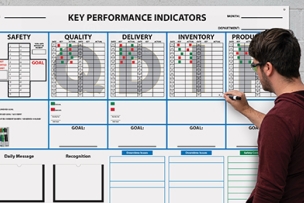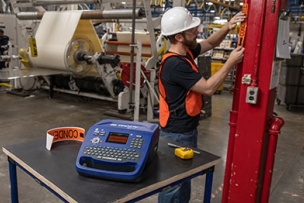The COVID-19 pandemic and health crisis has led to a shortage of personal protective equipment, especially N95 respirators, producing a rise in the sale of counterfeit products. Is your respirator real or fake? Here’s how to find out.
Is My Respirator Fake? How to Tell if Your N95 Is Real or Counterfeit
Fake N95 masks have flooded the market over the past year or so, as Americans have sought to protect themselves from airborne pathogens.
Counterfeit respirators are products that are falsely marketed as being approved by the National Institute for Occupational Safety and Health (NIOSH), which tests and certifies these protective devices. A fake respirator may not actually be capable of providing protection for the user.
Is the seller marketing the same products over time, or are they mainly selling trending items? Legitimate businesses and suppliers typically sell the same items over time.
Both NIOSH and the Centers for Disease Control and Prevention (CDC) have raised concerns about counterfeit respirators, but how do you tell if an N95 mask is real or counterfeit? How can you tell if a mask will protect you? And what should you know when purchasing N95 respirators on the open market?
Ensuring Respiratory Protection
Respirators, face masks and other personal protective equipment (PPE) are designed to protect individuals in the workplace from a broad range of injuries and illnesses that may arise due to contact with harmful dusts, chemicals, airborne pathogens or similar hazards.
According to the Occupational Safety and Health Administration (OSHA), employers must protect workers from “air contaminated with harmful dusts, fogs, fumes, mists, gases, smokes, sprays, or vapors.” This may be achieved with engineering control measures or, when those measures are not feasible, the use of appropriate respirators.
A respirator is worn over the nose and mouth to protect the wearer from hazardous materials in the surrounding air. Its filtration effectiveness is certified by NIOSH and typically offers a higher degree of protection than a mask or a cloth face covering.
The type of face covering you use depends on the level of risk you expect to encounter. OSHA uses standards put in place by the American National Standards Institute (ANSI) for PPE compliance requirements for such items as respirators and masks used in the workplace. Requirements for respiratory protection are found in OSHA’s 1910.134 standard.
Air-purifying respirators that are approved by NIOSH protect the wearer by filtering particles out of the air the user is breathing. There are seven classes of filters available, with 95 percent being the minimal amount of filtration that NIOSH will approve.
NIOSH approval of a respirator means it has undergone strict testing requirements. Within these tests, NIOSH simulates worst-case test conditions likely encountered in work environments, such as penetrating aerosol-size particles that may make it through a filter. A respirator must not allow more than 5 percent of these particles to penetrate, ensuring that every respirator that passes these tests will filter potentially hazardous particles when worn in real-world situations.
The use of NIOSH-approved respirators, such as N95s, should be used as part of a workplace’s respiratory protection program, which an employer is responsible for establishing and maintaining, and must include elements such as medical evaluations, fit testing and training, and be administered by a suitably trained program administrator.
Read more: PPE Selection: Find the Right Type of Respirator
Signs of a Counterfeit N95
Counterfeit respirators are products sold by organizations that falsely claim to have received NIOSH accreditation, or products that are replicated and sold as a particular NIOSH-approved model.
There are several ways to identify a NIOSH-approved respirator. For example, N95s that are NIOSH-approved include a testing and certification (TC) approval number (e.g., TC 84A-XXXX). They also have an approval label on or within the packaging of the respirator (that is, inside the box itself, or within the users’ instructions).
You can verify the approval number on the NIOSH Certified Equipment List (CEL) or the NIOSH Trusted-Source page to determine if the respirator you are using has been approved by NIOSH. NIOSH-approved filtering facepiece respirators (FFRs) will always have one of the following designations: N95, N99, N100, R95, R99, R100, P95, P99 or P100.
Other signs that a respirator may be counterfeit may include:
- No markings at all on the filtering facepiece respirator
- No approval (TC) number on the filtering facepiece respirator or headband
- No NIOSH markings
- An incorrect spelling of “NIOSH”
- Presence of decorative fabric or other decorative add-ons, such as sequins
- Claims that the respirator is approved for children (NIOSH does not approve any type of respiratory protection for children)
- The filtering facepiece respirator has ear loops instead of headbands
You can locate respirator approval markings using the “Example of Exterior Markings on a NIOSH-Approved Filtering Facepiece Respirator” graphic shown below.

The CDC has identified certain respirators that don’t meet NIOSH’s standards for face protection, or claim to have received NIOSH approval when they have not in fact received it. You can see a list of them here.
Warning Signs When Buying Respirators
With many respiratory protection products available to buy online or in stores, it pays to understand the red flags that could indicate the products you’re buying do not meet NIOSH standards.
Before buying respirators from third-party marketplaces or unfamiliar websites, the CDC recommends looking for the following possible warning signs:
When buying from third-party marketplaces:
- If a listing claims to be “legitimate” and “genuine,” it likely is not.
- Look at the transaction history and reviews if possible.
- Most auction sites or third-party distributors have a link to the seller of the item and their past sales.
- Many buyers will leave reviews about their experience or the quality of the product.
- Are there changes to the items sold over time (high or low periods of transaction)?
- Is the seller marketing the same products over time, or are they mainly selling trending items? Legitimate businesses and suppliers typically sell the same items over time.
- A buyer can view this by looking at the businesses’ other products. Buyers should also be able to learn more about sellers on big online platforms (reviews of the seller).
- Are there price changes or swings (is a price too good to be true)?
- Look at the quantity a buyer has in stock.
- During a time of shortage, advertising “unlimited stock” could indicate the respirator is not NIOSH approved.
- Does the seller break marketplace policy and hide their contact information within images?
- Typical third-party marketplaces require the seller and buyer to interact within an on-site messaging system. Sellers should not try to bypass this system to display personal contact information.
When buying respirators online:
- Is the primary contact email address connected to the website or is it a free email account?
- Using a free email service may suggest the seller is not part of the company.
- Look for bad grammar, typos and other obvious errors.
- Watch for cookie-cutter websites, where the sellers interchange several websites, making mistakes:
- Mixing up names/logos
- Leaving the site partially undone with dummy text
- Blank pages
- An odd privacy policy page and/or broken links
- Domain squatting-type activity (a misspelled domain)
Using highly effective respirators has become the standard of care for protection against airborne dangers such as the COVID-19 virus.
But with counterfeit N95 masks being sold in stores and online, it pays to understand how to spot a fake respirator that has not received NIOSH certification, as the health and well-being of your workers could depend on it.
Read more: Disinfection of PPE for Working Safely in Construction During the COVID-19 Pandemic
What steps are you taking to make sure your respirator inventory is NIOSH-approved and provides genuine protection for your workers? Share your thoughts in the comments below.





Talk to Us!
Leave a reply
Your email address will not be published. Required fields are marked *